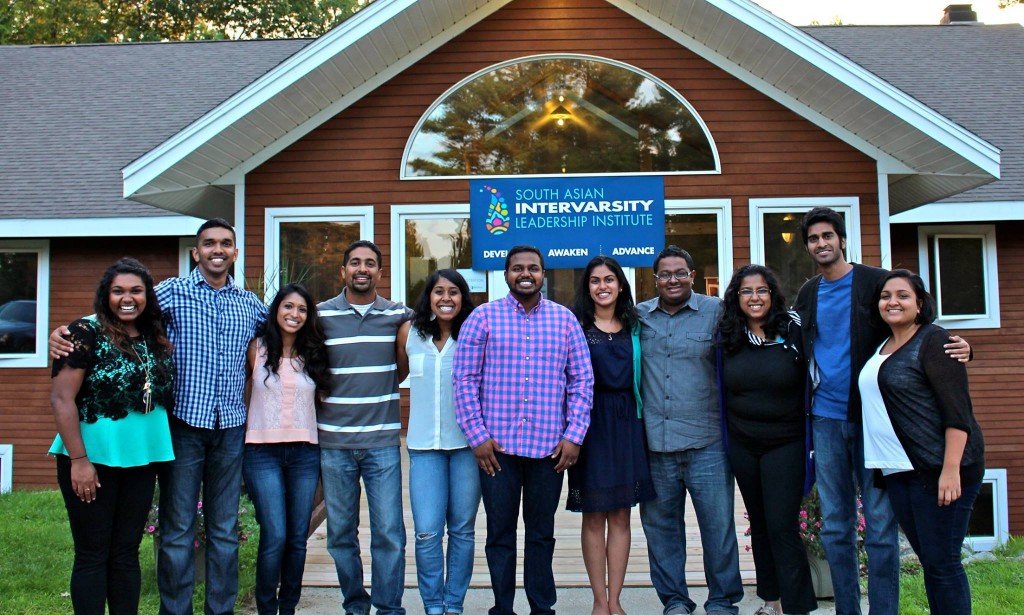There is a problem in the South Asian (SA) church. It is the generational gap. Unfortunately, most church leaders are not paying attention to the generational gap between SA Immigrants and SA Americans.
If church leaders do not address this issue, the gap will widen with time. This widening gap will drive young men and women away from the immigrant church. However, if church leaders make steps toward closing the gap, then the church will become truly inter-generational.
I believe this newly forming inter-generational church will be a well-spring of life for SA Immigrants and for the growing SA American population. Together, they will reach many, here and abroad, that are far from Jesus.

Original Photo by ewen and donabel (cc)
Here are 10 ways your church can start bridging the gap:
#1. Create Space for Second-Generation Leadership
This is extremely vital. The church should elect talented, mature, Godly SA Americans as new elders, committee members, pastors, decision-makers, etc. This will create a diverse leadership team that addresses both SA Immigrant and SA American needs.
In order to do this, churches must make room for SA American leaders. Unfortunately, most churches rely on immigration to supply their leadership pipeline. As more SA Immigrants join churches, leadership opportunities are given to them while overlooking qualified SA Americans. This needs to stop. Being bilingual is not more important than character and competency. Make space for second-generation leadership.
#2. Assemble Inter-Generational Ministry Teams
There are many teams in a church: worship, hospitality, Sunday School, Life Groups, preaching, etc. Churches should make these teams intentionally inter-generational.
For example, consider assembling worship teams of SA Immigrants and SA Americans. Allow them to experiment with styles of worship, musicality, and language. Give them space to fuze together these cultures to create a worship experience for everyone!
Consider putting together preaching teams of SA Immigrants and SA Americans. The sky is the limit on how you decide to do this. Come together, challenge one another, and learn from one another. Teams are stronger when both groups are working together to advance the Kingdom.
#3. Employ Strategies to Reach the “De-Churched”
An unfortunate by-product of this generational gap is the growing number of SA Americans that have given up on church altogether. They feel hurt by the immigrant church, and the multiethnic church experience is not congruent with their felt needs — so they are stuck.
Churches should start an intentional effort to get these SA Americans back to church. Your strategy should be both attractional and missional. Attractional such that you create programs that draw them (and their young children) back to church. Missional such that you empower church members to go to them (via life groups, outreaches, etc.).
Overtime, I believe the de-churched will attend regularly, and your church will build much good-will and trust with SA Americans. This is a huge win!

Original Photo by Subharnab
#4. Cultivate a Traditional-Progressive Culture
Ok, I know that sounds oxymoronic. Tradition and progress are two important values. If you let either one go too far, it will ruin the intricate balance at your church. Both values must co-exist and keep the other in tension. Tradition. Progress. Tension.
Create a culture that upholds the values of our past South Asian heritage but it is progressive enough to meet the changing landscape of the SA American experience. In other words, you are driving forward, but responsibly checking the rear-view mirror. This will take some experimentation. But remember that both groups and viewpoints are important. One is not more dominant.
#5. Learn from Other Asian-American Communities
Believe it or not, other Asian-American churches experience this generational gap and have found ways to address it. Let us learn from our brothers and sisters in the Chinese-American and the Korean-American churches.
Many of these churches have come up with ideas that SA churches can adapt. They have experimented with different church models, various types of church services, and hosting separate church sites, etc. to meet the growing demands of an inter-generational church. Go visit one and ask for their advice — build a partnership with them.
#6. Focus on Evangelism and Social Justice
SA Americans want to make a difference in the U.S. and around the world — not merely preserve culture. They want to serve the needs of the poor, hurt, and marginalized in the U.S. and abroad. On the other hand, SA Immigrants typically want to help churches in South Asia exclusively. Capitalize upon this tension.
SA Immigrants are great at evangelism once they have been trained and motivated. My parents (and the immigrant generation) share their faith WITH EVERYONE! They are so good at it! On the other hand, most SA Americans barely say anything to their friends about Jesus. Again, capitalize on this tension. Make each other better through your strengths! Close the gap as you focus on reaching others together.
#7. Recruit Professional Biblical Counselors
It’s a crazy world. Raising a family is a difficult task already. But it is even more difficult when you are an immigrant. Raising bicultural kids is hard! Cultural values, Biblical values, and societal norms clash and create chaos at home. Miscommunication ensues.
Sometimes parents, spouses, and children cannot navigate life on their own. They need outside counsel to face these difficulties. Pastors are not always the best counselors. But Biblical counselors are professionally trained to highlight and alleviate the strain on a family. Counseling is a needed ministry in the inter-generational SA church — it will bring generations together.

InterVarsity Christian Fellowship/USA South Asian American Staff are reaching SA American College Students across the nation
#8. Transform your Church Building into a Cultural Hub
Many churches only use their church building for prayer meetings, Bible Study, and Sunday services. What if you kept your church building open all week long? Transform your church into a hub for cultural, religious, academic, and recreational engagement across generations!
Encourage SA Immigrants to teach classes on culture, language, history, etc. Have SA Americans tutor children of immigrants. Host sports and recreational activities to bring generations together (I hear badminton is becoming a big deal — haha). Share recipes with live culinary demonstrations. Invite non-Christian friends to join you! Learn. Live. Laugh. Love one another… together.
#9. Teach the Word with Contextualized Application
This is crucial. Ensure that your preaching/teaching has practical application for both SA Immigrants and SA American congregants. If there is no application, then there is no action. Contextualize next steps and make those opportunities happen!
Do the research on what kind of challenge is appropriate for both groups. Consider asking SA Americans to do a “treasure hunt” prayer at the local mall with church members. Consider asking SA Immigrants to man the booth at a local Diwali celebration. Both are contextualized challenges. Keep both groups accountable! Close the gap by inviting both into mission!
#10. Model Open and Honest Communication
Closing the generation gap starts with you. Make the first move. Model open and honest communication across generations. When making decisions at church, listen to the minority voice, and make decisions that benefit the whole church not just key demographics!
Consider the SA Immigrant and their needs — don’t make it hard for immigrants to join the church. Consider the SA Americans — help make church accessible. Yes, there will ALWAYS be tension! But this tension needs to be managed not solved through open communication. Listen to everyone. Advocate for each other. Honor God.
Try one of these strategies at your church.
You will not change your church overnight. It will take years of changing culture, developing leaders, and casting vision. But don’t give up! Please let me know if you need any help. Together we can make a difference for future generations. You are an everyday world changer! Start Today!
Suggested Reading
 |
Following Jesus Without Dishonoring Your Parentsby Jeanette Yep, Peter Cha, Paul Tokunaga This book does a great job of highlighting the differences between first and second generation immigrants. The first generation came to survive and succeed, the next generation is looking to be significant. Our differing viewpoints need to be brought to Jesus. |
